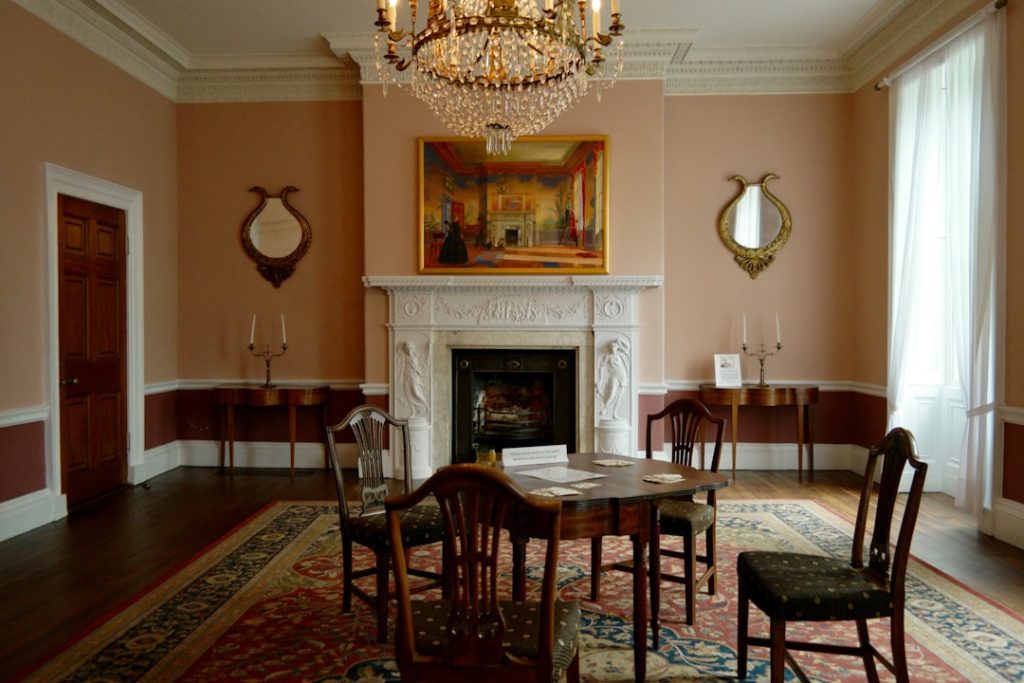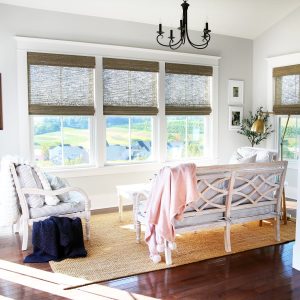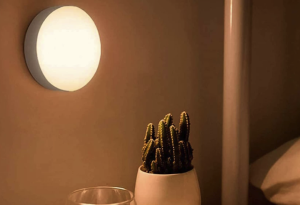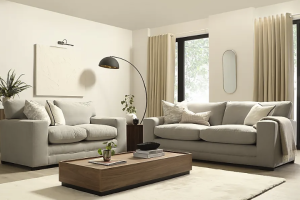Creating a Cozy Nordic Living Room with the Perfect Chandelier

Nordic design aesthetics are characterized by their simplicity, functionality, and connection to nature. Originating from the Scandinavian countries, this design philosophy emphasizes minimalism and a clean, uncluttered look that promotes a sense of calm and tranquility. The use of light colors, particularly whites and soft pastels, is prevalent, as these hues reflect the natural light that is often scarce in northern latitudes.
The furniture and decor are typically crafted from natural materials such as wood, leather, and wool, which not only enhance the aesthetic appeal but also contribute to a warm and inviting atmosphere. This design approach is not merely about visual appeal; it embodies a lifestyle that values sustainability and the thoughtful use of resources. In addition to its visual characteristics, Nordic design is deeply rooted in cultural values that prioritize comfort and functionality.
The concept of “hygge,” a Danish term that encapsulates a feeling of coziness and contentment, plays a significant role in this aesthetic. Spaces are designed to be lived in, with an emphasis on creating environments that foster social interaction and relaxation. This is often achieved through the strategic arrangement of furniture, the inclusion of soft textiles, and the careful selection of decorative elements that evoke a sense of warmth.
As such, understanding Nordic design aesthetics involves not only appreciating its visual elements but also embracing the underlying philosophy that seeks to enhance the quality of life through thoughtful design.
Choosing the Right Chandelier for Your Space
Choosing the Perfect Chandelier for Your Space
Selecting the perfect chandelier Nanolamps for your living space can significantly influence the overall ambiance and style of the room. When considering a chandelier, it is essential to take into account the size and scale of your space. A grand chandelier can serve as a stunning focal point in a large room, drawing the eye upward and creating a sense of drama. Conversely, in smaller spaces, a more delicate or minimalist design can provide elegance without overwhelming the area.
Considering Size, Scale, and Placement
The height at which the chandelier is hung is also crucial; it should be positioned to allow for comfortable movement beneath it while still being visually impactful. Beyond size and scale, the style of the chandelier should harmonize with the existing decor and reflect your personal taste. This balance is key to creating a cohesive and inviting space.
Style and Design Considerations
For those who appreciate Nordic design aesthetics, a chandelier made from natural materials such as wood or metal can seamlessly integrate into the overall theme. Opting for designs that feature clean lines and geometric shapes can enhance the minimalist appeal while providing adequate illumination. Additionally, consider the type of lighting used in the chandelier; warm-toned bulbs can create a cozy atmosphere, while cooler tones may lend a more modern feel.
Creating a Cohesive Space
Ultimately, choosing the right chandelier involves balancing aesthetics with functionality to create a cohesive and inviting space. By considering the size, scale, style, and placement of your chandelier, you can create a beautiful and functional space that reflects your personal taste and style.
Creating a Warm and Inviting Ambiance
To cultivate a warm and inviting ambiance in your living room, it is essential to focus on elements that promote comfort and relaxation. One effective way to achieve this is through the strategic use of lighting. Layering different types of lighting—such as ambient, task, and accent—can create depth and warmth within the space.
Soft, diffused lighting from lamps or wall sconces can complement the more direct illumination provided by overhead fixtures like chandeliers. Additionally, incorporating dimmer switches allows for greater control over the intensity of light, enabling you to adjust the mood according to different occasions or times of day. Another key aspect of creating an inviting atmosphere is the careful selection of furnishings and decor that encourage social interaction.
Arranging seating in a way that promotes conversation—such as using a circular layout or placing chairs close together—can foster a sense of intimacy among guests. Textiles play an important role as well; plush cushions, soft throws, and area rugs can add layers of comfort while also contributing to the overall aesthetic. By thoughtfully combining these elements, you can transform your living room into a welcoming haven that invites both relaxation and connection.
Incorporating Natural Elements into Your Living Room
Integrating natural elements into your living room not only enhances its aesthetic appeal but also fosters a sense of tranquility and well-being. One of the most effective ways to achieve this is through the use of plants. Indoor greenery can breathe life into any space, providing color and texture while also improving air quality.
Consider incorporating a variety of plants at different heights to create visual interest; tall floor plants can add drama, while smaller potted plants can be placed on shelves or tables for added charm. Additionally, using natural materials such as wood for furniture or stone for decorative accents can further reinforce this connection to nature. Another way to incorporate natural elements is through the use of organic textiles and colors inspired by the outdoors.
Fabrics made from natural fibers like cotton, linen, or wool not only feel luxurious but also contribute to an earthy aesthetic. Choosing color palettes that reflect nature—such as soft greens, browns, and muted blues—can evoke a sense of calm reminiscent of serene landscapes. Furthermore, artwork or decor featuring natural motifs—such as landscapes or botanical prints—can serve as beautiful focal points that tie the room together.
By thoughtfully integrating these elements, you can create a living room that feels both grounded and harmonious with its surroundings.
Mixing Textures and Fabrics for a Cozy Feel
The interplay of textures and fabrics is crucial in creating a cozy feel within your living room. Layering different materials can add depth and interest to your space while enhancing its overall comfort. For instance, combining soft textiles like velvet cushions with more rugged materials such as woven throws or knitted blankets creates a tactile experience that invites relaxation.
Additionally, incorporating various textures through rugs, curtains, and upholstery can help define different areas within an open-concept space while maintaining a cohesive look. When selecting fabrics for your living room, consider both their aesthetic qualities and their practicality. Natural fibers like cotton and linen are not only visually appealing but also breathable and durable, making them ideal for everyday use.
Mixing patterns—such as stripes with florals or geometric designs—can also add personality to your decor; however, it’s essential to maintain a balance by keeping a consistent color palette throughout. This approach ensures that while each element stands out on its own, they all work together harmoniously to create an inviting atmosphere that encourages relaxation and enjoyment.
Selecting the Right Lighting for Different Areas of the Room
Defining Functionality and Mood with Lighting
Lighting plays a crucial role in defining the functionality and mood of various areas within your living room. Each zone may require different types of lighting to serve its purpose effectively. For instance, ambient lighting is essential for general illumination throughout the space; this can be achieved through overhead fixtures like chandeliers or ceiling-mounted lights.
Task and Accent Lighting for Enhanced Functionality
However, task lighting is equally important for specific activities such as reading or working on hobbies. Table lamps or floor lamps placed strategically near seating areas can provide focused light where it’s needed most. Accent lighting can also enhance the visual appeal of your living room by highlighting artwork or architectural features. Wall sconces or picture lights can draw attention to specific elements while adding warmth to the overall ambiance.
Choosing the Right Lighting Fixtures
When selecting lighting fixtures, consider their style in relation to your decor; fixtures made from natural materials or featuring clean lines can complement Nordic design aesthetics beautifully. Additionally, incorporating dimmable options allows you to adjust lighting levels based on time of day or occasion, ensuring that your living room remains versatile and inviting.
Adding Personal Touches to Make the Space Your Own
Infusing personal touches into your living room is essential for creating a space that truly reflects your personality and lifestyle. One effective way to achieve this is through curated collections of art or photographs that resonate with you emotionally. Displaying family photos in stylish frames or showcasing artwork from local artists can add character while telling your unique story.
Additionally, incorporating travel souvenirs or heirlooms can serve as conversation starters while imbuing your space with memories and experiences that are meaningful to you. Beyond art and decor, consider how your choice of furnishings can express your individuality. Selecting pieces that resonate with your personal style—whether they are vintage finds or contemporary designs—can create an eclectic yet cohesive look that feels distinctly yours.
Furthermore, don’t shy away from experimenting with color; adding bold accents through cushions or wall art can inject vibrancy into an otherwise neutral palette. By thoughtfully curating these personal elements, you can transform your living room into a sanctuary that not only looks beautiful but also feels like home—a true reflection of who you are.





